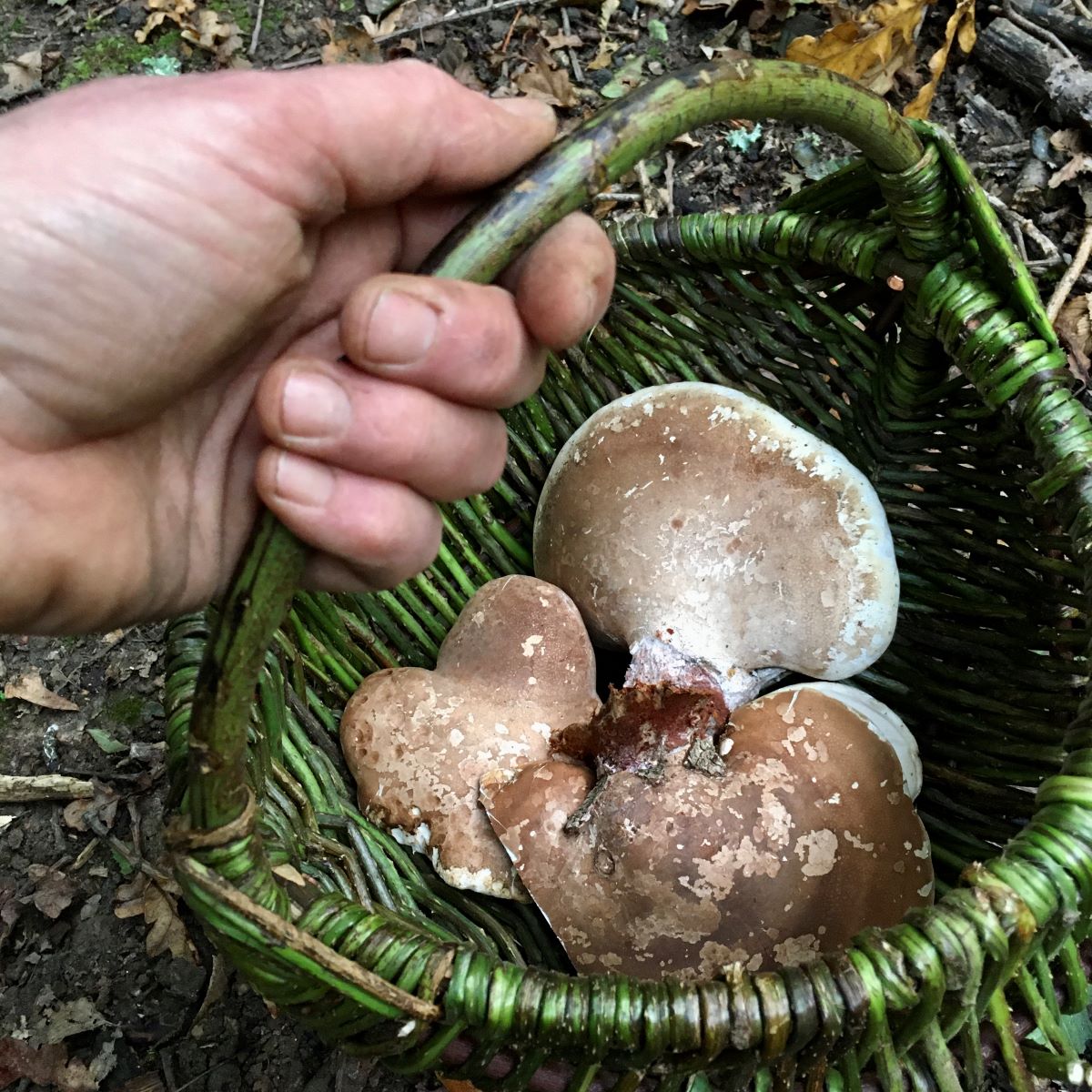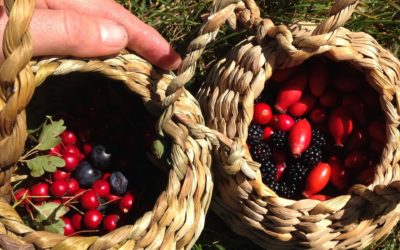Birch Polypore
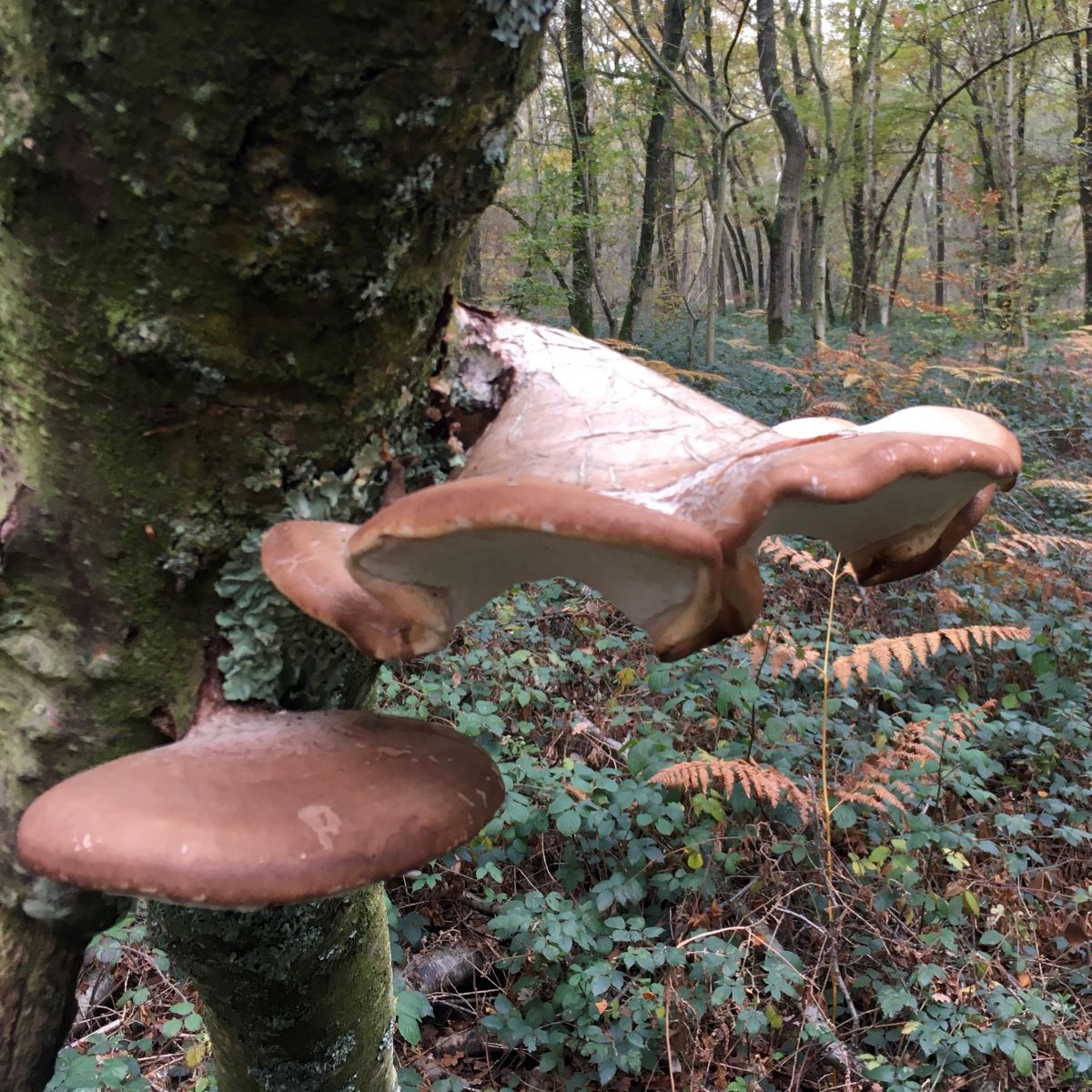
This is the wild mushroom that’s in the soup we cook on the fire for lunch on my woodland courses.
Birch Polypore (Fomitopsis betulina) is also known as razor strop fungus, birch conk, birch bracket. It’s valued for its medicinal properties and my herbalist friend Lucinda describes its actions as: immune tonic, anti-inflammatory, anti-tumour, anti-parasitic, anti-septic, anti-viral, anti-bacterial, styptic.
She says: it contains primary metabolites (polysaccharides) and secondary metabolites (such as triterpenes) that are beneficial for health, and its traditional uses are backed up by research. It makes a wonderful immune tonic as the polysaccharides are known to be some of the most effective immune enhancing compounds available.
Ethnobotany
It can be used as a leather strop for adding extra sharpness to a blade, which has given it its common name, the razor strop fungus. Owen Jones, who makes traditional oak swill baskets in Cumbria, has a large chunk of birch polypore in his workshop for just that purpose.
Thin strips cut form the fungus can be used as a plaster for small, finger cuts.
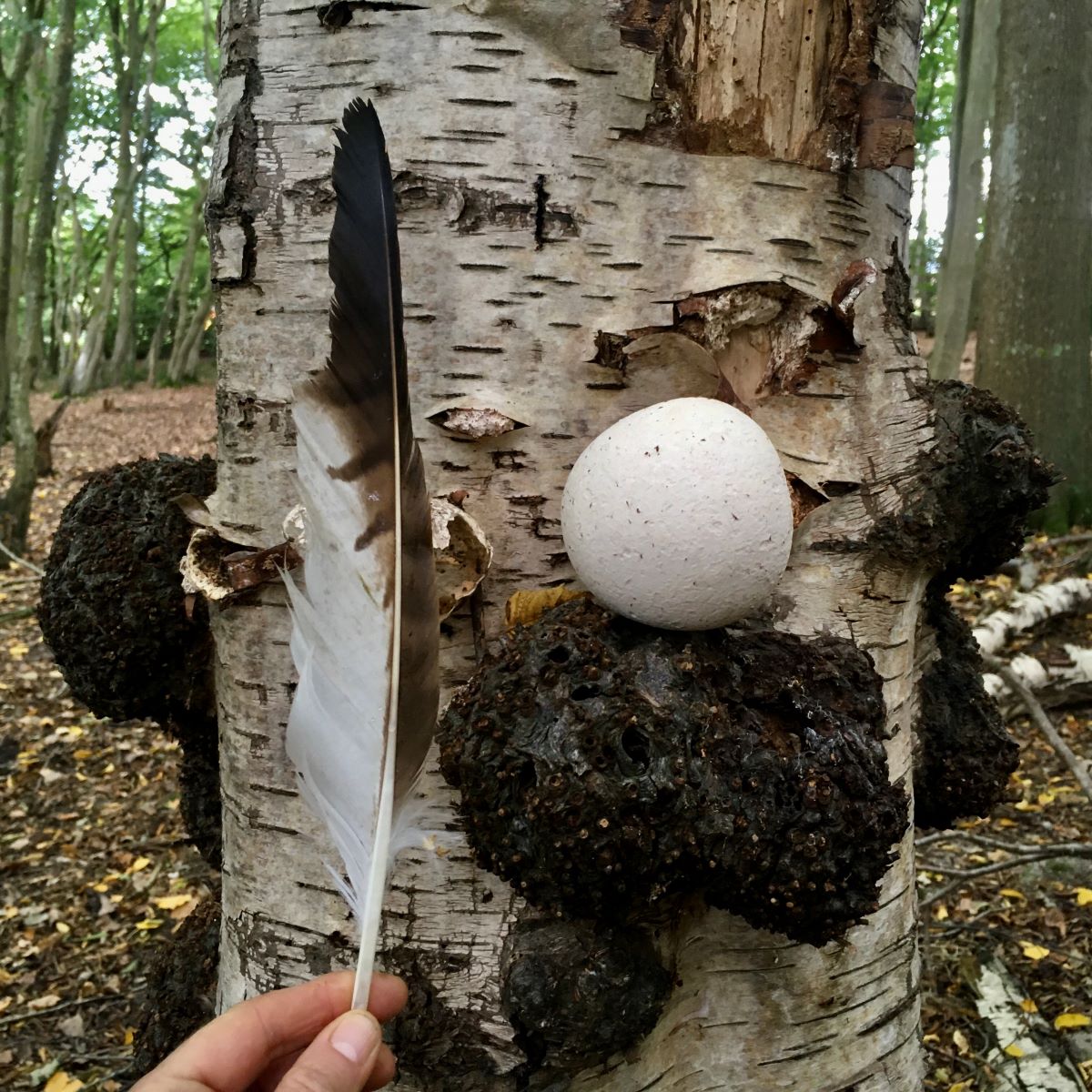
How & Where It Grows
Birch polypore grows freely in the temperate forests of Europe and North America. Young ones are round and white; the cap changes to beige/tan and then darkens/goes grey with age. The underside is white, with many pores which release their spores into the air. Spores land on exposed areas of birch trees, and begin to grow hyphae which spread to form a mycelial network through the tree. It’s considered mildly parasitic on birch trees; a healthy tree will be able to contain the spreading hyphae but in one that is aged or diseased the fungus will begin the gradual process of breaking it down. The fruiting bodies are annual, but are often chewed by insects as they age and are better picked young.
Archaeobotany
Ötzi’, found in the ice of the Italian Alps, and dated as being 5,300 years old, carried two pieces of birch polypore. At autopsy he was found to be infected with intestinal parasites, which birch polypore is active against, so it’s thought he was carrying them as treatment.
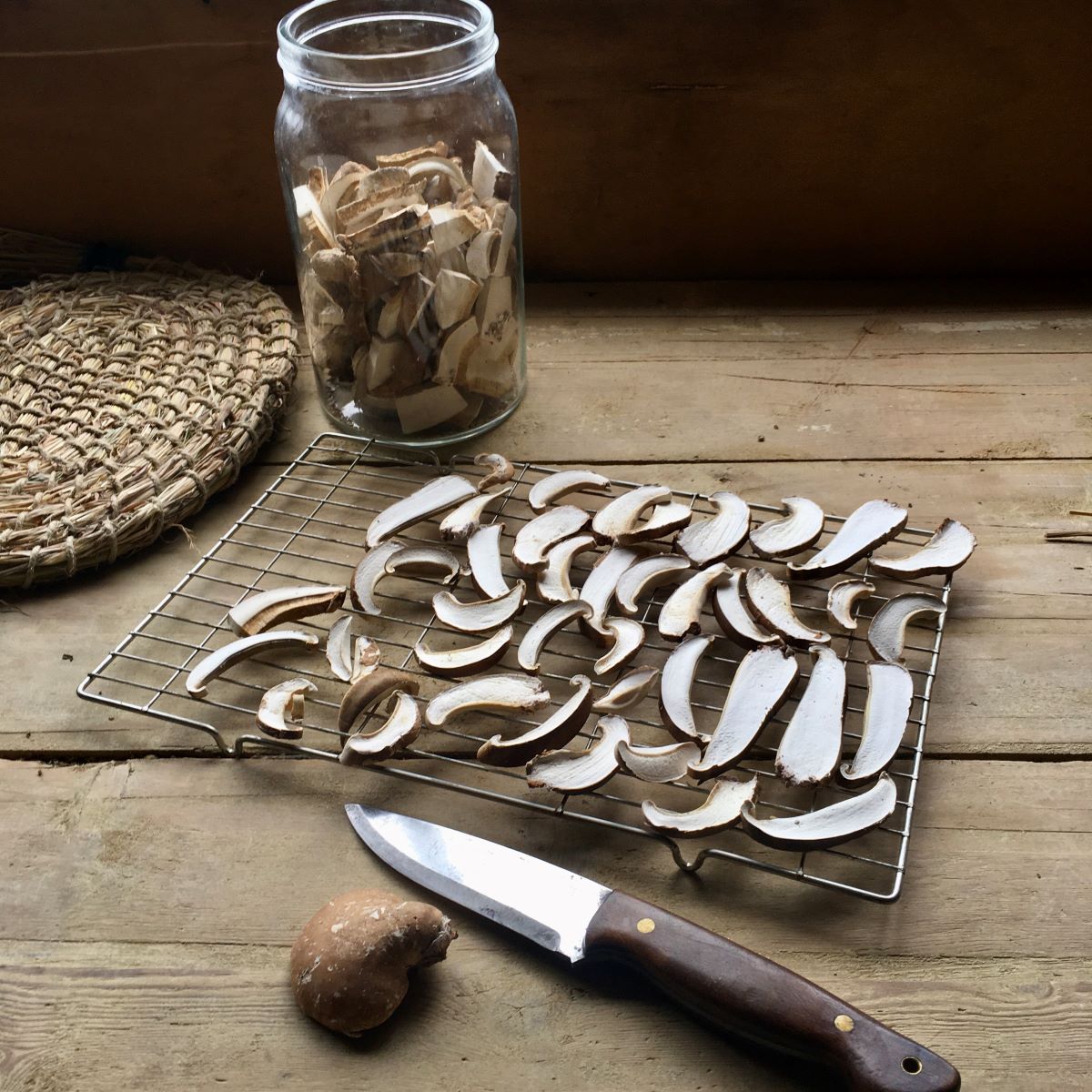
Preparation Method
To harvest, carefully ease the fungus off the birch tree. While it’s fresh slice it into pieces about 0.5cm thick. Spread out on a wire rack or similar, in a dry, airy environment, and it will be dry in a couple of weeks. Store in a jar or brown paper bag out of direct light until ready to use.
Add the dried (or fresh) birch polypore to a pan of water, bring to the boil and then simmer it gently for at least 40 minutes. It’s important to cook it this way (rather than just left to infuse) in order to release the beneficial constituents. The pieces of fungus aren’t edible, so once you’ve extracted the goodness from them, pop them in the compost.
At home I make up a batch of birch polypore stock and then freeze it in ice cube trays: in a two litre saucepan of water I cook about 20g of sliced, dried fungus. Then I add a few cubes to any soup or stew through the winter months.
On its own the decocted ‘stock’ tastes quite bitter, but if you don’t mind that you can drink a small cupful daily.
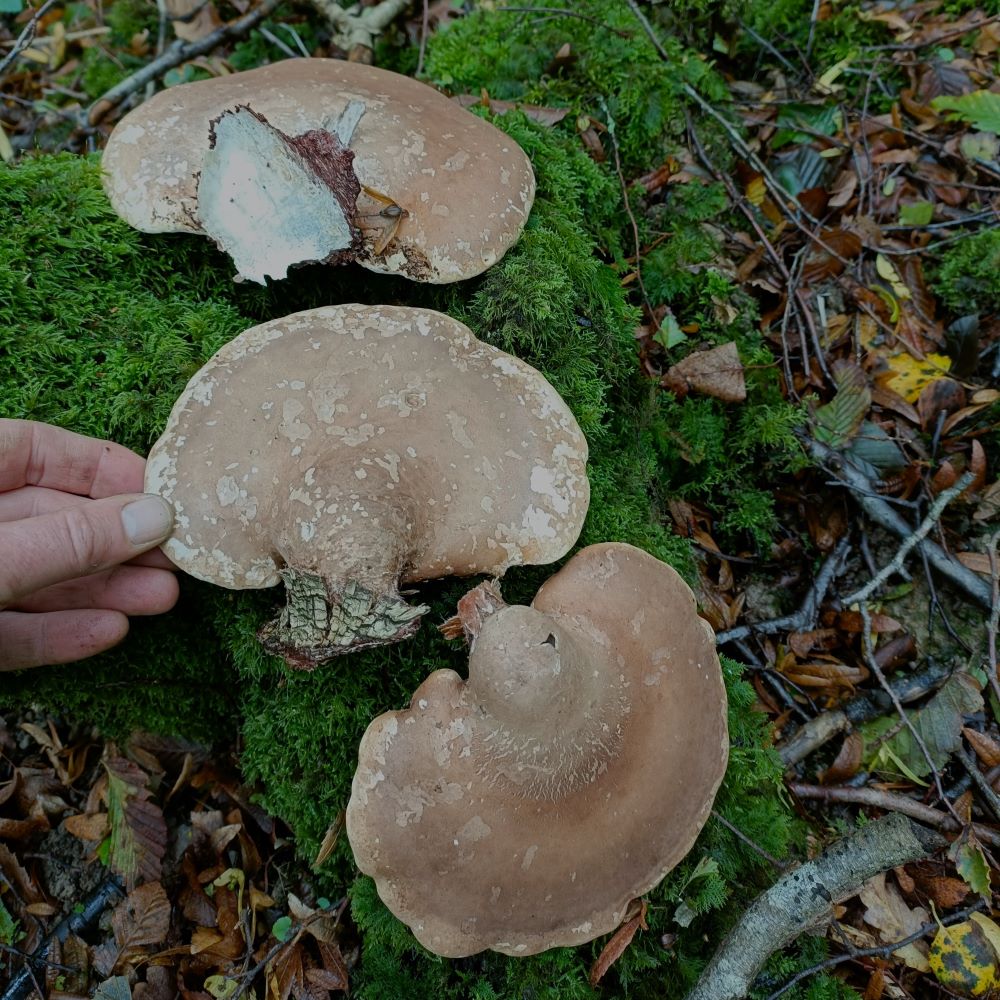
Even though birch polypore is abundant, it has a vital role in its environment, so do please do harvest responsibly, taking a few from here and there rather than taking all from one or two trees.
Many thanks to medicinal herbalist Lucinda Warner, from whose website much of this info was sourced.
Weave your own foraging basket with me in the Sussex woods.
